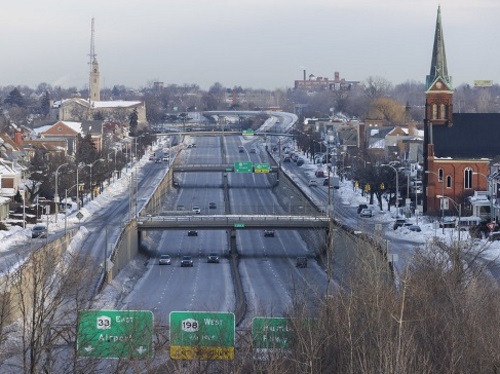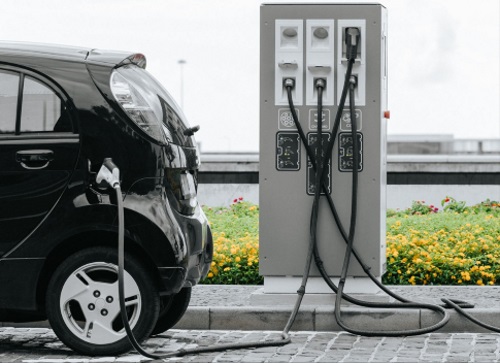FEDERAL ACTION
Montana officials ask Buttigieg for quick assistance – Missoula Current
Feds get new guidelines for e-bikes in national parks, forests – WyoFile
Axios Climate Truths: Climate hits home – Axios
FAA Proposes Requiring More Efficient Jets and Turboprops to Lower Climate Impacts – FAA (Media release)
USDA Announces Partnership with the Port of Houston and Expansion of Partnership with Northwest Seaport Alliance to Ease Port Congestion and Restore Disrupted Shipping Services to U.S. Grown Agricultural Commodities – USDA (Media release)
COVID-19
MTA stops collecting and publishing mask compliance stats in subways and buses – amNY
Cycling through the COVID-19 Pandemic to a More Sustainable Transport Future: Evidence from Case Studies of 14 Large Bicycle-Friendly Cities in Europe and North America – Sustainability
INFRASTRUCTURE RESILIENCE AND SUSTAINABILITY
Va. Infrastructure Project Deploys Multiple Sustainable Solutions – ENR Mid-Atlantic
County approves L.A. River Master Plan over 11th-hour objections from environmental groups – Los Angeles Times
MDOT seeks funding for Electric Vehicle charging infrastructure – SuperTalk Mississippi Media
Central Puget Sound Adopts Regional Transportation Plan with an Eye Toward 2030 – The Urbanist
UPS Test Electric Bicycles in Congested Cities – CBS News
Engineers explore innovative ways to improve resilience of coastal structures – University of Miami
Dams, a key part of state infrastructure, must be kept safe – Capitol Weekly (Opinion)
AIR QUALITY
To Get to Net Zero, This City Is Making a Map – CityLab
DC Region Will Now Consider Climate Impacts In Transportation Planning, Aiming To Cut Emissions In Half – DCist
How Washington State is leading the way for electric boats in the US – KING-TV
N.Y. measure seeks to combat traffic pollution near schools – Times Union
ENVIRONMENTAL JUSTICE
How Equity Can Help Integrate Transportation Systems – AASHTO Journal
How climate change and environmental justice are inextricably linked – Washington Post
NATURAL RESOURCES
Reducing Runoff to Save Farmers Money and Protect Water Quality – University of Maryland
Flooding Closes Yellowstone, in a Sign of Crises to Come – New York Times
What it really means for a wildfire to be ‘contained’ – Popular Science
Prairie songbirds are affected by unpredictable noise produced by oil drilling – The Conversation
Florida should let feds handle wetlands permitting – Herald-Tribune (Opinion)
Joe Jonas Lassos Litter As The New Face Of Don’t Mess With Texas® – TxDOT (Media release)
CULTURAL RESOURCES
People mover, new bike paths and bus lanes: 2028 Olympics could fuel a transit boom in L.A. – Los Angeles Times
Coalition loops state panel into dispute over Laguna Beach preservation rules, downtown plan – Laguna Beach Independent
HEALTH AND HUMAN ENVIRONMENT/ACTIVE TRANSPORTATION
Colorado DOT Adding Bicycle Law Signs on Highways – AASHTO Journal
Audi’s Connected Car Tech Aims to Save Cyclists – The Drive
Scooters Get a Second Chance – New York Times
Can’t get there from here: Florida’s Coast-to-Coast Trail is still missing a middle – City & State Florida
Boston transit agency to try urine sensors on elevators – AP
TRB RESOURCES/ANNOUNCEMENTS
Building Socioeconomic Equity Through Transportation Research – TRB
Roadside Fire Risk and Prevention Strategies – TRB (Webinar)
FEDERAL REGISTER NOTICES
Atlantic Offshore Wind Transmission Convening Workshop on Stakeholder Partnership – Sharing the Benefits and Opportunities for Atlantic Offshore Wind Transmission – Department of Energy (Notice)
Michigan: Final Authorization of State Hazardous Waste Management Program Revisions – EPA (Final authorization)
Air Plan Approval; California; San Joaquin Valley Unified Air Pollution Control District; Open Burning – EPA (Final rule)
Air Plan Approval; North Carolina; North Carolina BART Rule Revisions – EPA (Final rule)
Revisions and Confidentiality Determinations for Data Elements Under the Greenhouse Gas Reporting Rule – EPA (Proposed rule)
Notice of Funding Availability for Credit Assistance Under SWIFIA Program – EPA (Notice of funding availability)
Notice of Funding Availability for Credit Assistance Under WIFIA Program – EPA (Notice of funding availability)
United States-Mexico-Canada Agreement Mitigation of Contaminated Transboundary Flows Project – EPA and US International Boundary and Water Commission (Notice of availability of draft programmatic environmental impact statement; notice of virtual public comment meetings; request for comments)
Membership in the National Parks Overflights Advisory Group – FAA (Solicitation of applications)
Maricopa Sun Solar Complex Habitat Conservation Plan, Kern County, California; Environmental Assessment – Fish and Wildlife Service (Notice of availability of documents; request for public comment)
Coastal Nonpoint Pollution Control Program: Proposal To Find That Illinois Has Satisfied Conditions on Earlier Approval – NOAA/EPA(Notice of proposed finding; request for comments)


